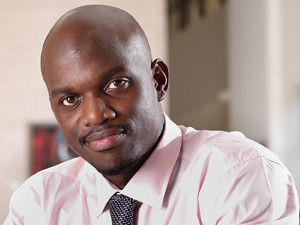
Today, 90% of Africa's Internet traffic comes out of Europe. Much of that content was traditionally hosted in North America, but the content owners have, over the years, expanded their presence into Europe and the Asia-Pacific to improve the experience of their users and customers.
So says Mark Tinka, head of engineering at Seacom, following the undersea cable company's addition of the Deutscher Commercial Internet Exchange (DE-CIX) in Frankfurt, Germany, to the list of European Internet exchange points at which it peers.
"Most African Internet users tend to get much more of their content from Europe than from the US," says Tinka. He adds Seacom's dream is to one day be able to keep the majority of traffic on the continent, thereby reducing the amount of money Africa spends on transporting traffic to Europe.
"That will also help to drive more Internet penetration in Africa because of a reduction in cost of business," he notes.
Seacom is a submarine cable operator with a network of submarine and terrestrial high-speed fibre-optic cable that serves the east and west coasts of Africa. Its reach extends to and from Europe, India and Asia.
The pan-African network uses bundled backhaul, open access points of presence and global partnerships to provide wholesale connectivity around the world for African network operators.
Besides DE-CIX, in Europe Seacom also peers at LINX (London Internet Exchange), Netnod (Stockholm), AMS-IX (Amsterdam Internet Exchange) and FranceIX (Marseille). It also ports at Djibouti Mombasa (Kenya), Dar es Salaam (Tanzania), Maputo (Mozambique), Mtunzini (SA), and Mumbai (India).
By traffic, Tinka explains, DE-CIX is the largest network peering point in Europe. It is a major peering point for traffic from Germany and other major Western, Eastern and Central Europe economies, he adds.
"We, thus, need to peer at this vital hub if we want to offer our wholesale clients and their customers the best possible Internet experience for traffic into and out of Europe."
Seacom's short-term goal is to provide customers with the lowest possible latency and fastest bandwidth throughput to all of the content presently located in Europe, says Tinka. Being present at DE-CIX and the other major European exchange points enables that short-term goal, he points out.
"In the medium- to long-term, we are working hard with content owners and content delivery networks to bring more of that content into Africa. We hope that will reduce latency further so our customers will experience even faster and smoother access to the Internet."
A number of projects have been started that aim to bring more bandwidth to Africa, to cut down costs for both operators and end-users.
At least three projects for an undersea backbone in the Indian Ocean have been started. The East African Submarine Cable System, sponsored by the World Bank and the Development Bank of Southern Africa, is a cable system that connects Mtunzini and Port Sudan (Sudan), with branches to several countries on the eastern coast of Africa.
The Kenyan government has started a similar project named the East Africa Marine System, with the collaboration of Etisalat. A third project, Seacom, is completely African-owned and its bandwidth has already been sold to several customers.
Share